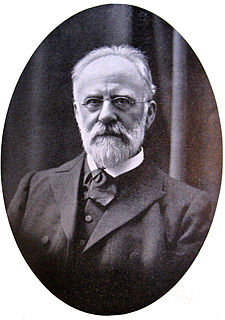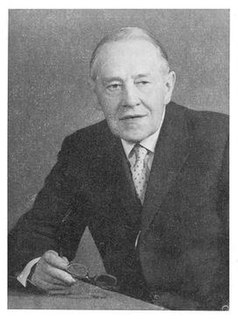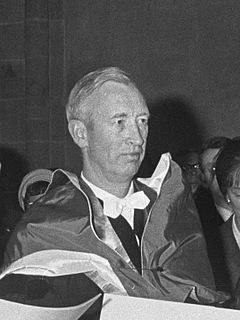 W
WThe Carlsberg Research Laboratory is a private scientific research center in Copenhagen, Denmark under the Carlsberg Group. It was founded in 1875 by J. C. Jacobsen, the founder of the Carlsberg brewery, with the purpose of advancing biochemical knowledge, especially relating to brewing. It featured a Department of Chemistry and a Department of Physiology. In 1972, the laboratory was renamed the Carlsberg Research Center and was transferred to the brewery.
 W
WChristian Boehmer Anfinsen Jr. was an American biochemist. He shared the 1972 Nobel Prize in Chemistry with Stanford Moore and William Howard Stein for work on ribonuclease, especially concerning the connection between the amino acid sequence and the biologically active conformation.
 W
WEmil Christian Hansen was a Danish mycologist and fermentation physiologist.
 W
WRuth Hubbard was a professor of biology at Harvard University, where she was the first woman to hold a tenured professorship position in biology.
 W
WWilhelm Johannsen was a Danish pharmacist, botanist, plant physiologist, and geneticist. He is best known for coining the terms gene, phenotype and genotype, and for his 1903 "pure line" experiments in genetics.
Johan Gustav Christoffer Thorsager Kjeldahl, was a Danish chemist who developed a method for determining the amount of nitrogen in certain organic compounds using a laboratory technique which was named the Kjeldahl method after him.
 W
WCarsten Erik Olsen was a Danish plant ecologist and plant physiologist, who pioneered the study of plant nutrition in soils of different pH.
 W
WFrederic Middlebrook Richards, commonly referred to as Fred Richards, was an American biochemist and biophysicist known for solving the pioneering crystal structure of the ribonuclease S enzyme in 1967 and for defining the concept of solvent-accessible surface. He contributed many key experimental and theoretical results and developed new methods, garnering over 20,000 journal citations in several quite distinct research areas. In addition to the protein crystallography and biochemistry of ribonuclease S, these included solvent accessibility and internal packing of proteins, the first side-chain rotamer library, high-pressure crystallography, new types of chemical tags such as biotin/avidin, the nuclear magnetic resonance (NMR) chemical shift index, and structural and biophysical characterization of the effects of mutations.
 W
WErnst Johannes Schmidt was a Danish biologist credited with discovering in 1920 that European eels migrate to the Sargasso Sea to spawn. Before this people in North America and Europe had wondered where the small glass eels, or elvers, came from.
 W
WSøren Peter Lauritz Sørensen was a Danish chemist, famous for the introduction of the concept of pH, a scale for measuring acidity and alkalinity.
 W
WHans Tuppy is an Austrian biochemist who participated in the sequencing of insulin, and became Austria's first university professor for biochemistry. He was Austrian Minister for Science and Research from 1987−1989.
 W
WPaul Charles Zamecnik was an American scientist who played a central role in the early history of molecular biology. He was a professor of medicine at Harvard Medical School and a senior scientist at Massachusetts General Hospital. Zamecnik pioneered the in vitro synthesis of proteins and helped elucidate the way cells generate proteins. With Mahlon Hoagland he co-discovered transfer RNA (tRNA). Through his later work, he is credited as the inventor of antisense therapeutics. Throughout his career, Zamecnik earned over a dozen US patents for his therapeutic techniques. Up until his death in 2009 he maintained a lab at MGH where he studied the application of synthetic oligonucleotides for chemotherapeutic treatment of drug resistant and XDR tuberculosis in his later years.